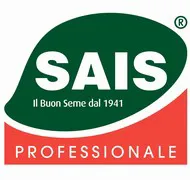One of the objectives of the research carried out by SAIS Sementi in collaboration with SATA, a technical consultancy company, was enhancing the value of its varieties through an experimental data report that highlights the peculiarities required by the market. The research was conducted on the Yup F1 round salad tomato variety, which boasts a great taste, high added value, a high organoleptic profile, and easy plant management.
 As for the methodology used, the analysis was carried out according to the specific marketing regulation no. 543 of 2011, using approved methods for organoleptic, physical-chemical, and colorimetric parameters on at least 10 fruits.
As for the methodology used, the analysis was carried out according to the specific marketing regulation no. 543 of 2011, using approved methods for organoleptic, physical-chemical, and colorimetric parameters on at least 10 fruits.
The product showed excellent characteristics in relation to homogeneity of size and low rates of weight loss, in addition to maintaining the turgidity of the berries during the shelf life and the absence of defects.
Stable chemical and physical values were recorded, adequate for Brix, acidity, firmness, and dry matter, while at the colorimetric level, the skin had a good sheen. Furthermore, during its shelf life, the color changed towards a redder shade, with persistence of the green color on the side.
As for the T1 (first stage, at the time of sampling), the average size recorded was 40.3 mm, with an average weight of 38.7 g, with homogeneous conformity and 0% of the product not meeting the minimum marketing requirements (conforming).
Within T2, i.e., seven days after the first sampling, the weight loss is 2.1%, with conformity of the product, a healthy condition, and no skin or pulp defects. The same condition at the T3 time (14 days after the first sampling at T1), with a 3.1% drop in weight compared to the initial state.
For these reasons, the size of the product is in line with the standards of the distribution chains, with a maximum variability of 8 mm, which is within the tolerance of the regulations (maximum 10 mm). In terms of weight, the drop during the shelf life is in line with expectations, given the storage conditions, while from the point of view of defects, the sample showed a loss of turgidity of the calyx, which, however, given the absence of other defects in the quality of the fruit, does not imply a non-conformity for the markets.
With regard to the physical-chemical analysis, in terms of the Brix degree, the product has a good content of soluble solids already at T1, with values increasing over time from 7.8° to 8.2° at T3. The acidity values remain constant at T1 and T2 at 0.9%, with a slight decrease to 0.8% at T3. Hardness undergoes a constant but very slight decrease during shelf life, going from 1.6 kg/cm2 at T1 to 1.4 kg/cm2 at T3, but remaining at adequate values and in line with the type of product. The value of dry matter is quite high, in accordance with the soluble solids content, with percentages that remain stable up to T3, without any decrease.
Click here for an enlargement.
If we analyze the graph above with regard to color, we can see that, at the beginning of the shelf life, the product has a more vivid and intense color, with a very good skin sheen, than at the end of the shelf life. In fact, the Chroma* and L* values decrease, highlighting the loss of color intensity and the transition to a duller color.
The evolution of these parameters during the shelf life indicates a clear change in the color of the product, with the fruit gradually changing to a redder color. At T2, the change from green to red is more pronounced and is already perceptible at T2 than the change in shoulder color, which occurs more slowly and is only visible at T3. The different change from green to red is a distinctive and appreciated characteristic of this tomato.
 In summary, the Yup F1 variety showed very good quality characteristics not only at T1, but also during the whole duration of the trial, with no quality defects on the fruit during the whole duration of the trial. The distribution standards require a size that is in line with what this variety offers, while the weight of the product slightly decreases during the shelf life. The number of soluble solids was good, considering the type of product, and the amount of dry matter was relatively high.
In summary, the Yup F1 variety showed very good quality characteristics not only at T1, but also during the whole duration of the trial, with no quality defects on the fruit during the whole duration of the trial. The distribution standards require a size that is in line with what this variety offers, while the weight of the product slightly decreases during the shelf life. The number of soluble solids was good, considering the type of product, and the amount of dry matter was relatively high.
Based on the data presented, it is confirmed that Yup, besides being a productive and easy-to-grow variety, is suitable for autumn transplants in Sicily, and for spring and summer transplants in central Italy, and can be considered a valid alternative in this type of product also in terms of the product quality of the fruit.
For more information:
S.A.I.S. Sementi
+39 0547 384250
[email protected]
www.saissementi.it
